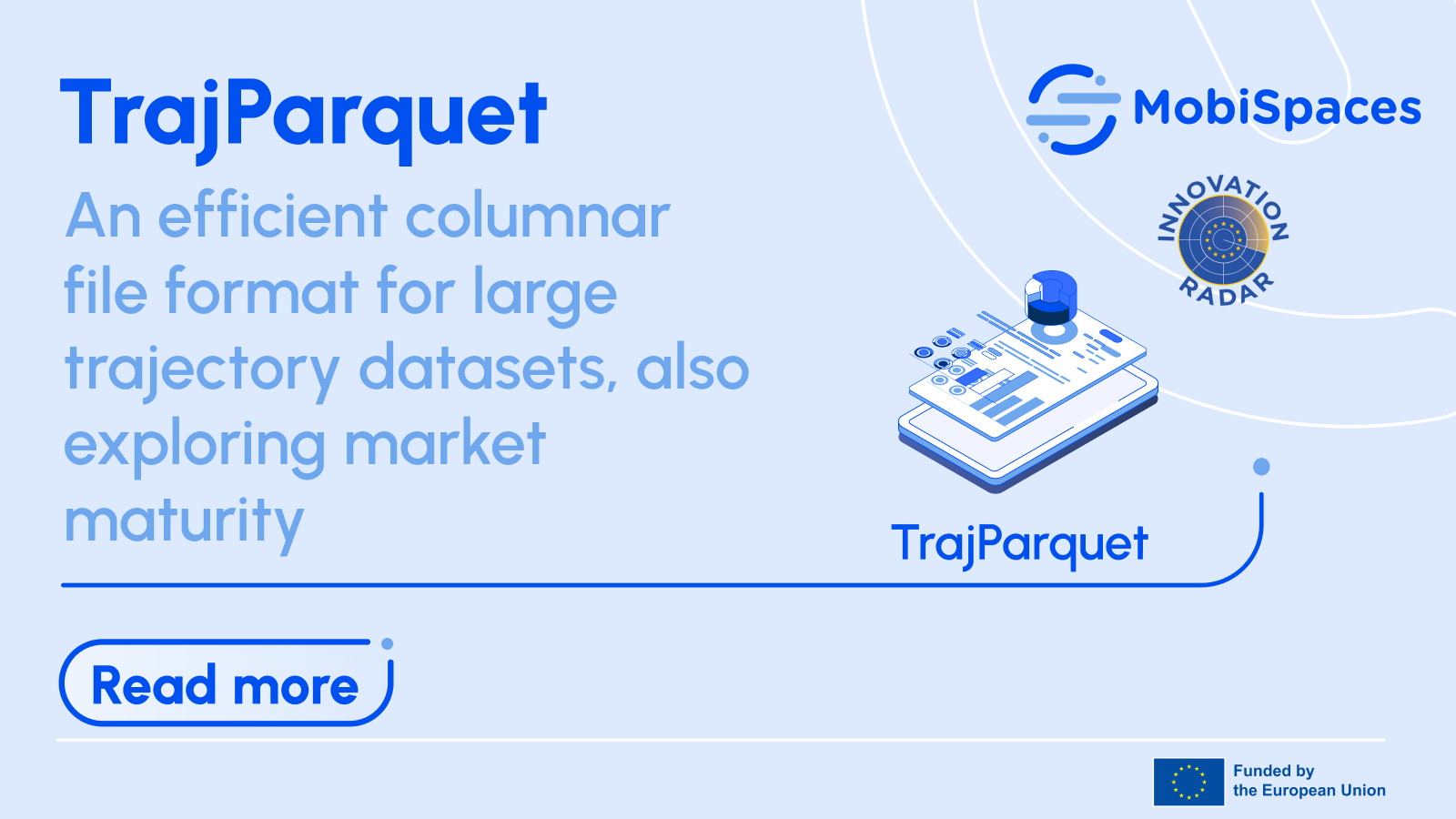
Developed in the framework of the Horizon Europe funded project, MobiSpaces, TrajParquet is an innovative columnar file format designed for the efficient storage and querying of large trajectory datasets. This format addresses the increasing complexities associated with the management of mobility data, which is becoming more and more common due to modern urbanisation and technological advancements.
The University of Piraeus Research Center led the development of TrajParquet. This prototype has been designed with the goal to avoid the expensive ETL (extract-transform-load) process in traditional DBMSs, which often struggle to keep up with the demands of high-volume and dynamic data generated from various moving objects. A solution can be the adoption of a columnar storage approach that allows TrajParquet to significantly enhance data retrieval speeds and storage efficiency. This feature is important especially for applications in intelligent transport systems and smart city infrastructures, where timely access to data can lead to improved operational efficiencies and better service delivery.
The MobiSpaces project, which will continue until the 31st of August 2025, aims to establish a mobility-aware data governance platform that not only utilises TrajParquet but also prioritises privacy and security in data handling.
To demonstrate the practical applications of TrajParquet, the MobiSpaces project will validate the format through five distinct use cases:
- Intelligent public transportation services in urban environments,
- Intelligent infrastructure traffic sensing for smart cities,
- Vessel tracking for non-cooperative vessels,
- Decentralised processing on-board of vessels,
- Enhanced nautical maps via crowdsourced bathymetry vessel data.
TrajParquet represents a step ahead in the management of trajectory data. Its development not only addresses the growing demand for efficient data storage and querying solutions but also contributes to broader societal goals.
For further details on TrajParquet and its applications, please refer to the Innovation Radar website.